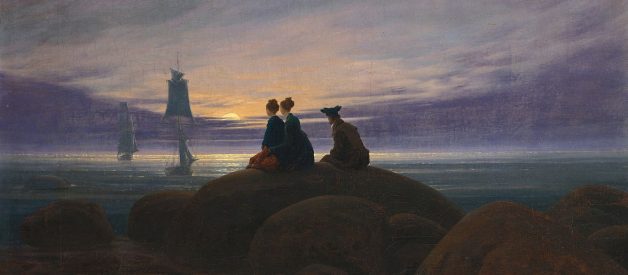Man?s mastery over landscape or his insignificance within it?
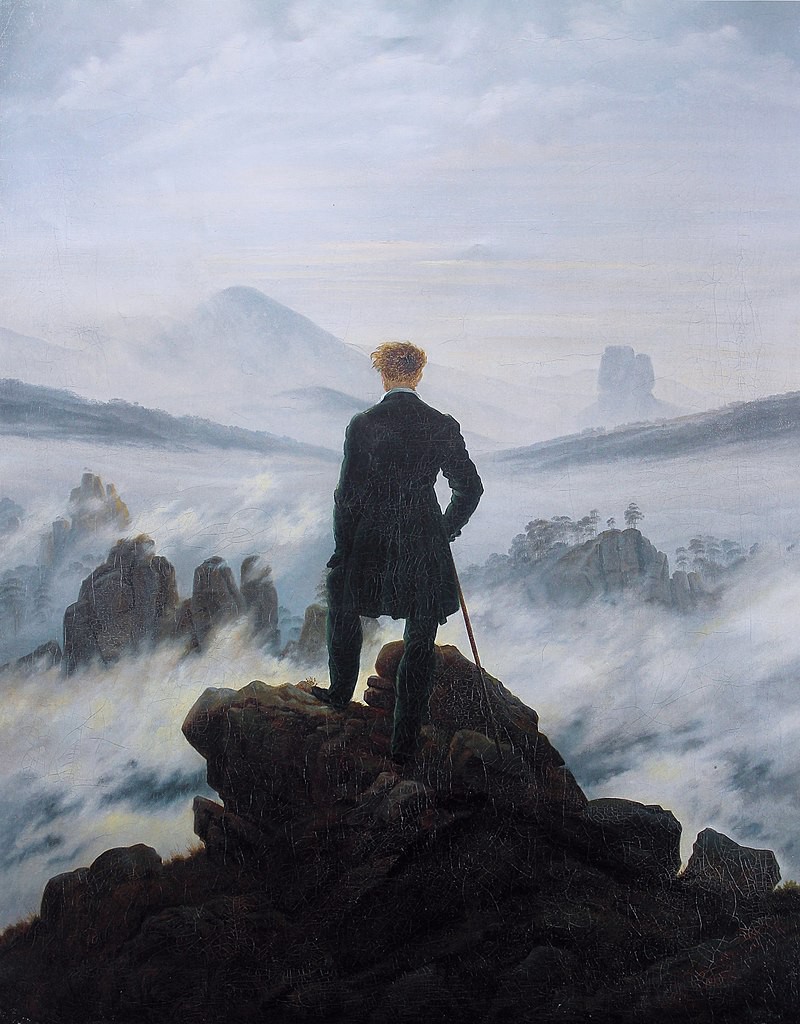 Wanderer above the Sea of Fog (c. 1818) by Caspar David Friedrich. Kunsthalle Hamburg, Hamburg, Germany. Source Wikimedia Commons
Wanderer above the Sea of Fog (c. 1818) by Caspar David Friedrich. Kunsthalle Hamburg, Hamburg, Germany. Source Wikimedia Commons
A man stands on top of a crag of rocks, overlooking a valley cloaked in mountain mist. Other ridges rise through the fog, giving the impression of islands in a sea.
The man himself appears to have hiked up this mountain and now looks out over the precipice at the heights he has scaled. He is an explorer ? though we sense driven more by romantic sensibility than by any professional pursuit. The way his hair catches in the wind, his overtly noble stance with one leg raised, his frock coat and walking cane, all give the impression of a well-to-do town-dweller who has chosen to spend time in the wilds of nature rather than human society.
Like so many of paintings by the German Romantic painter Caspar David Friedrich, the images focuses on a person gazing out over nature. We gaze out alongside him, a few paces behind perhaps, but still a companion in the moment. The terms for this device is Rckenfigur, or figure seen from behind, a compositional device by which the viewer can more readily identify with the scene.
What is he thinking as he stands there? It is natural to make the case for an optimistic interpretation: that he has trekked to the top of this rocky precipice, and now, exalted by his efforts, looks over the entire world ? glorious and inspired, elevated and dignified.
What is fascinating about this painting is that it can be approached in the opposite direction ? the pessimistic reading ? and still make sense: a man racked with doubt looks yearningly out over a vast mountain range. There is a cauldron of swirling mist beneath his feet. He is all alone in this place, in whose limitless dimensions he recognises, by contrast, his own uncertain existence.
The success of this painting, I think, lies in the possibility of this ambiguity: that a scene of such glory can also pose the threat of tragedy or personal alienation. What is he thinking as he stands there? It is impossible to tell.
Friedrich?s landscapes are nearly always large; they are often sombre or portentous. The people in them are frequently on the verge of things, the edge of a sea, the edge of a valley, a predicament that gives rise to the suggestion of journeys being made. Yet these are as much existential journeys ? journeys of contemplation ? as they are physical ones. Friedrich?s more tangible symbol of travel, the sailing boat, is usually shown in the middle or far distance. These vessels become another transitory element, coming and going like the sunlight, for the gazing people to peer at and silently yearn for.
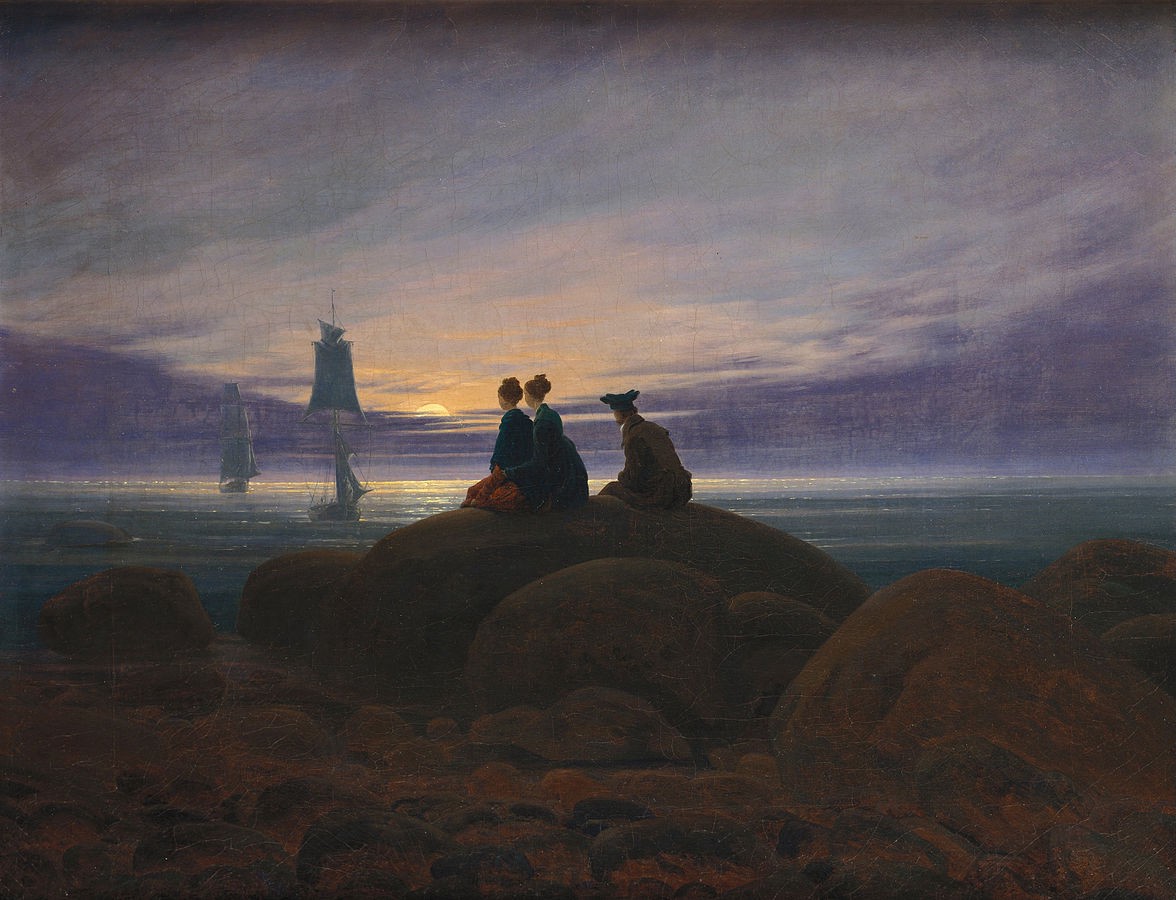 Moonrise Over the Sea (1822) by Caspar David Friedrich. Source Wikimedia Commons
Moonrise Over the Sea (1822) by Caspar David Friedrich. Source Wikimedia Commons
Locating and representing the moods of nature was Friedrich?s underpinning as an artist. Born is 1774 in the harbour town of Greifswald, his first subjects were the wild Baltic coastlands of northeastern Germany. Gradually, his depictions of nature began to contain crosses, Gothic buildings and religious motifs reflecting his strict Lutheran upbringing. With these symbols he found a means of heightening the intensity of landscape to a level where it seems heavy with allegory. He often ?invented? his paintings by fusing together several sketches from different locations into one image, sometimes even using the sketches made by other artists to fulfill his vision.
Friedrich used landscape as a way of expressing profound experience, and was able to link this to his protestant background. Yet even in his early output, it was clear that his sensibility allowed for a greater array of moods and possibilities than just religious veneration. His later work explored the spiritual side of humankind on a more universal level: face to face with the mystery and loneliness of great landscapes, a pensive glorification of nature in all its sublime and frightening grandeur.
Wanderer above the Sea of Fog is not a real view but was pieced together from different places visited by Friedrich during his sketching travels across Germany and Switzerland. The details of the rocky hilltop, for instance, can be traced back to a drawing made on 3 June 1813 at Kaiserkrone hill in the German state of Saxony.
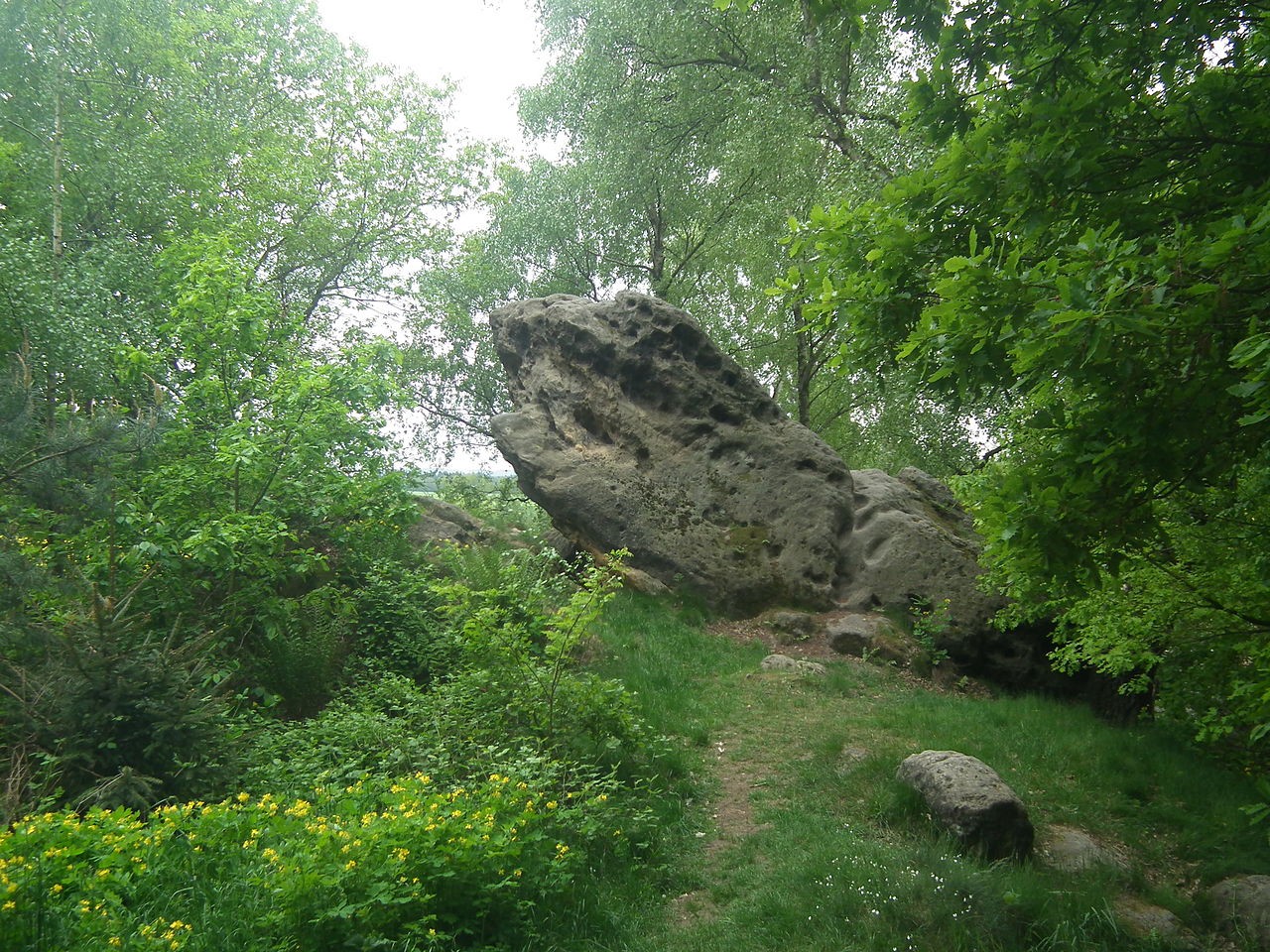 Rocky outcrop on the lower reaches of Kaiserkrone hill. Photo source Wikimedia Commons
Rocky outcrop on the lower reaches of Kaiserkrone hill. Photo source Wikimedia Commons
Friedrich took great care over the construction of the painting, and therefore by implication, the intention to create an object of transcendent grandeur. He was familiar with the Golden Section, the principle of aesthetic harmony as expounded by Luca Pacioli in his De Divina Proportione of 1509. Friedrich applied this principle to the structure of his painting, dividing the landscape into two parts above and below the horizon, in keeping with the mathematical ratio put forward by Pacioli.

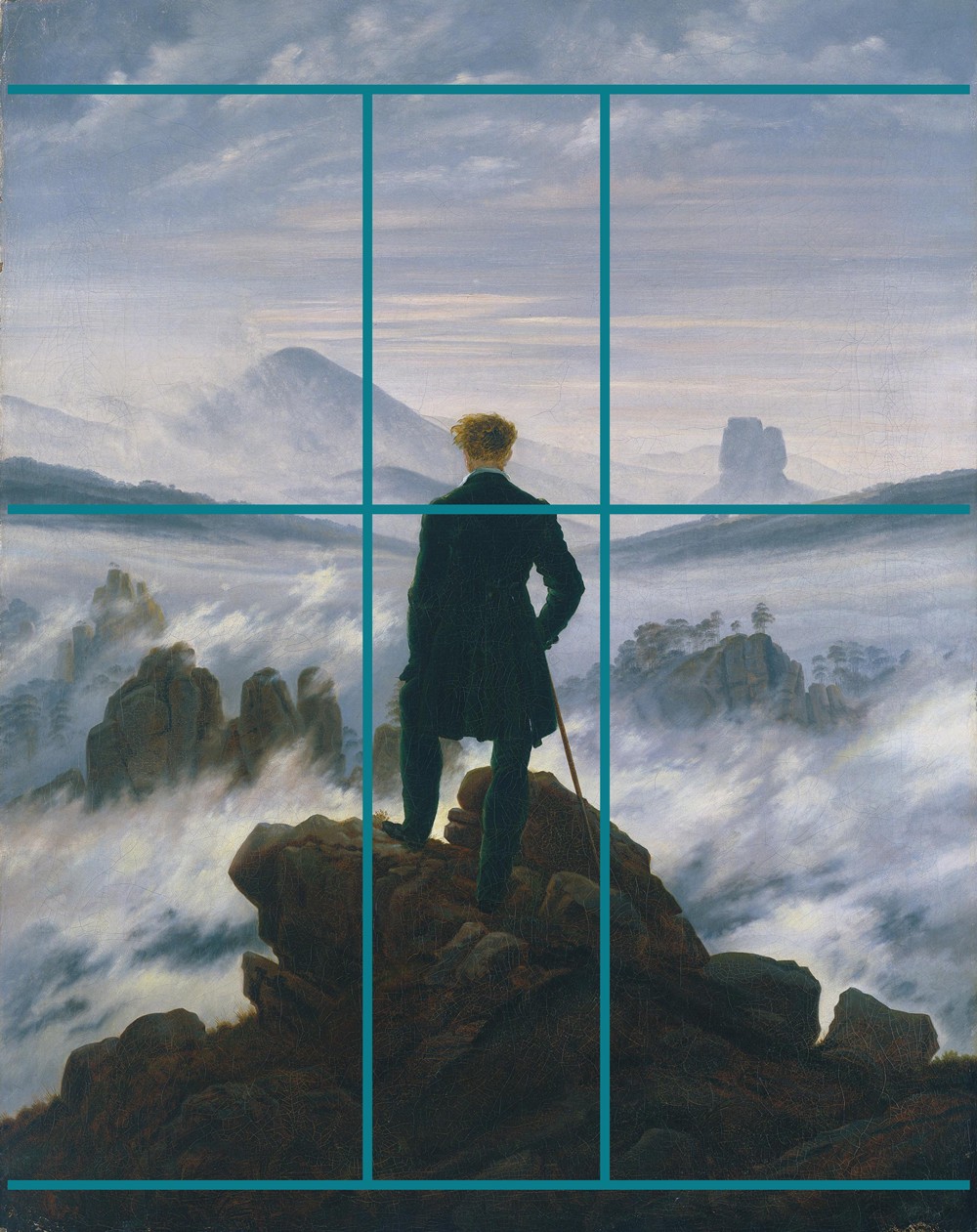 Left: page from Luca Pacioli?s De Divina Proportione, source The Golden Number. Right: Golden section applied to ?Wanderer above the Sea of Fog? (c. 1818) by Caspar David Friedrich. Original image source Wikimedia Commons, edited by author.
Left: page from Luca Pacioli?s De Divina Proportione, source The Golden Number. Right: Golden section applied to ?Wanderer above the Sea of Fog? (c. 1818) by Caspar David Friedrich. Original image source Wikimedia Commons, edited by author.
In the painting, the two sloping ridges that indicate the horizon fall exactly where the horizontal of the Golden Section sits. The ridges tilt gently in from left and right, focus in on the man?s chest; as such, his head and shoulders sit just above this line and give rise to the sense of exultation in the painting.
The whole composition is an imagined and idealised scene, a sort of cosmic question mark that induces a paradoxical mood of noble optimism and terrifying loneliness. As a later painting, Wanderer above the Sea of Fog moves away from any overt religious connotation ? except perhaps for the principle of dignity through reflection, a personal faith gained through existential contemplation.

Would you like to get?
A free guide to the Essential Styles in Western Art History, plus updates and exclusive news about me and my writing? Download here.
Christopher P Jones is a writer and artist. He blogs about culture, art and life at his website.
